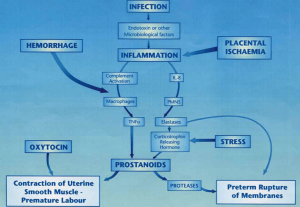It is rightly said “The mouth is a window of overall health.” It can reveal a number of symptoms, conditions, diseases in our body. Women go through various hormonal changes during different phases of her life which may influence her periodontal health to a great extent and periodontal diseases in turn have an influence on her overall well-being.
Gingival alterations during puberty, pregnancy, and menopause are associated with physiologic hormonal changes in a woman’s life stages. These can be seen as follows:
During puberty there is often an exaggerated response of the gingiva to plaque. Pronounced inflammation, edema, and gingival enlargement accompanied by bleeding resulting from local factors. This can be prevented with good oral hygiene.
During menstrual cycles, bleeding or bloated, tense feeling in the gums is often experienced. Preexisting gingivitis often gets aggrevated during this time.
Hormonal changes during pregnancy accentuate the gingival response to plaque and modify the resultant clinical picture. Tooth mobility, pocket depth, and gingival fluid are also increased during pregnancy.
The greatest severity is experienced between the second and third trimesters. Pronounced ease of bleeding is the most striking clinical feature. The gingiva is inflamed and varies in colour from bright red to bluish red. The marginal and interdental gingivae are edematous. They pit on pressure, appear smooth and shiny, are soft and pliable, and sometimes have a raspberry-like appearance. In some cases, the inflamed gingiva forms discrete “tumour like” masses, which are referred to as pregnancy tumours.
Hormonal Contraceptives aggravate gingival response to local factors in a manner similar to that seen during pregnancy. This invariably increases periodontal destruction.
During menopause, the usual rhythmic hormonal fluctuations in the woman’s cycle end as estradiol ceases to be the major circulating oestrogen, as a result, women tend to develop a gingivostomatitis. The gingiva and the remaining oral mucosa are dry and shiny, colour varies from pale pink to red, and bleed easily. Patients complain of a dry, burning sensation throughout the oral cavity that is associated with extreme sensitivity to thermal changes; abnormal taste sensations described as “salty,” “peppery,” or “sour.”
Problem of low birthweight (including preterm birth) – Worldwide, in all population groups, birth weight is the most important determinant of the chances of a new born infant to survive, grow and develop healthily. It is important to state that birthweight is an unrefined measure of fetal growth; associated with increased risks of adult conditions such as cardiovascular disease, diabetes and obstructive lung disease.
The international definition of low birth weight adopted by the Twenty-ninth World Health Assembly in 1976 is a birthweight of ‘‘less than 2500 g’’. Low birth weight can be as a result of both a short gestational period and retarded intrauterine growth.
Multifactorial nature of risk factors for preterm rupture of the membranes and premature labour.
By definition preterm low-birth-weight infants result from a shortened gestational period. Poor socioeconomic conditions, stress and anxiety, high maternal physical workload and maternal education have been shown to be related to increased rates of preterm birth.
Simplified scheme of some of the putative mechanisms involved in preterm labour and premature rupture of the membranes.

It is suggested that prostaglandins and proinflammatory cytokines play a pivotal role in the labour initiation process. Given the close relationship between inflammation and infection, it seems likely that alterations to the levels of these inflammatory mediators resulting from the normal host response to an infectious agent may represent the key mechanism through which infection is linked to preterm low birth weight. Tumour necrosis factor alpha and interleukin – 6 have been shown to cross human fetal membranes in an in vitro culture study. The possibility that periodontal gram-negative infections may be important with respect to preterm birth has come from an Offenbacher S, 1995 in which periodontal disease was shown to be a significant risk for preterm birth. The infected periodontium can also be regarded as a reservoir for both microbial products and inflammatory mediators. Local prostaglandin E2 and both local and systemic tumor necrosis factor alpha levels have been shown to be increased in periodontitis. Findings suggest that infection with P. gingivalis may affect human pregnancy outcome.
Summary
Periodontal diseases share many common risk factors with preterm low birth weight. The inflammatory mediators that occur in the periodontal diseases play an important part in the initiation of labour, there are plausible biological mechanisms that could link the two conditions which leads to preterm low birth weight infants many of which fight for survival.
Bonus: Download our monthly e-bulletin!Click here to get it
DISCLAIMER : “Views expressed above are the author’s own.”

















Comments